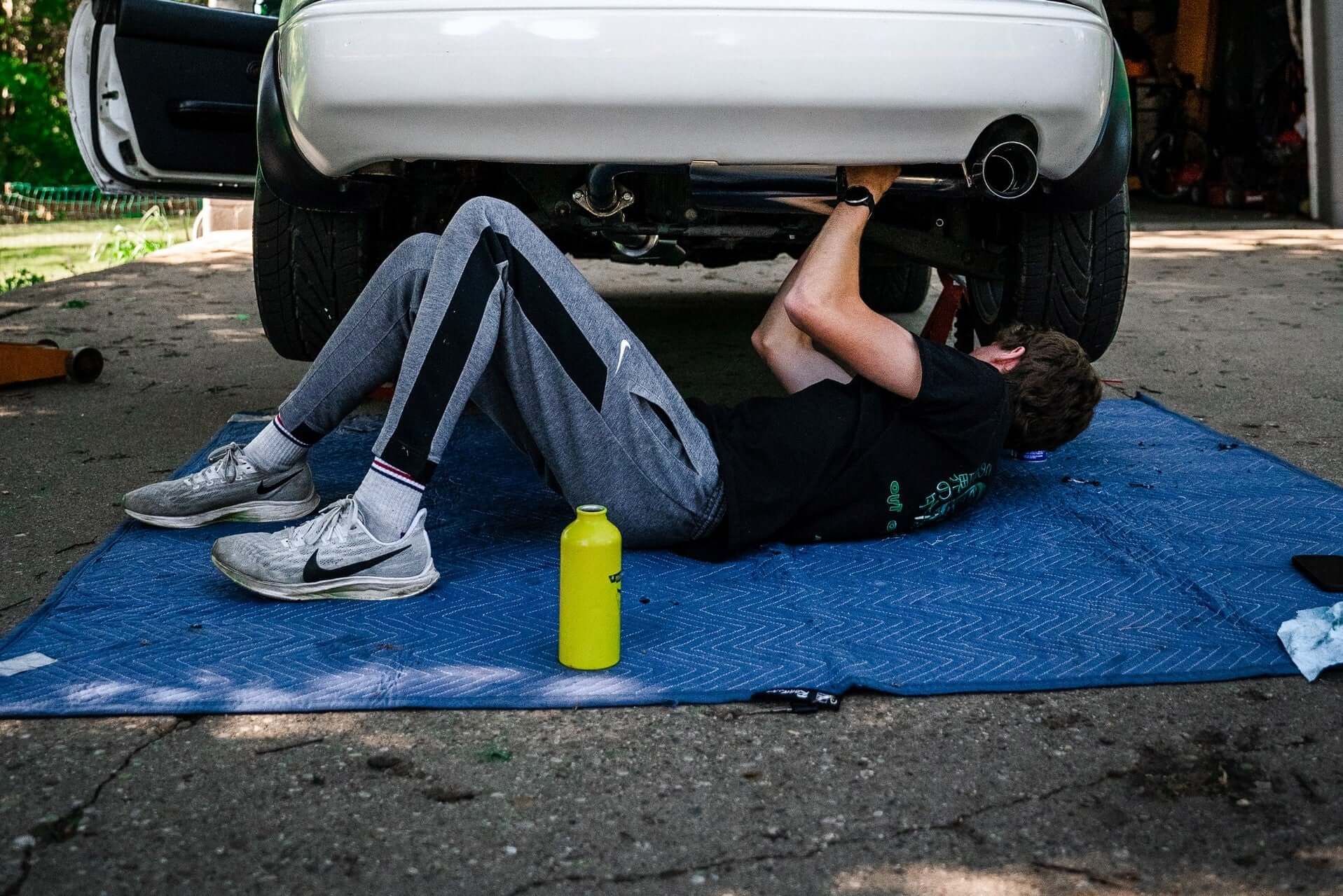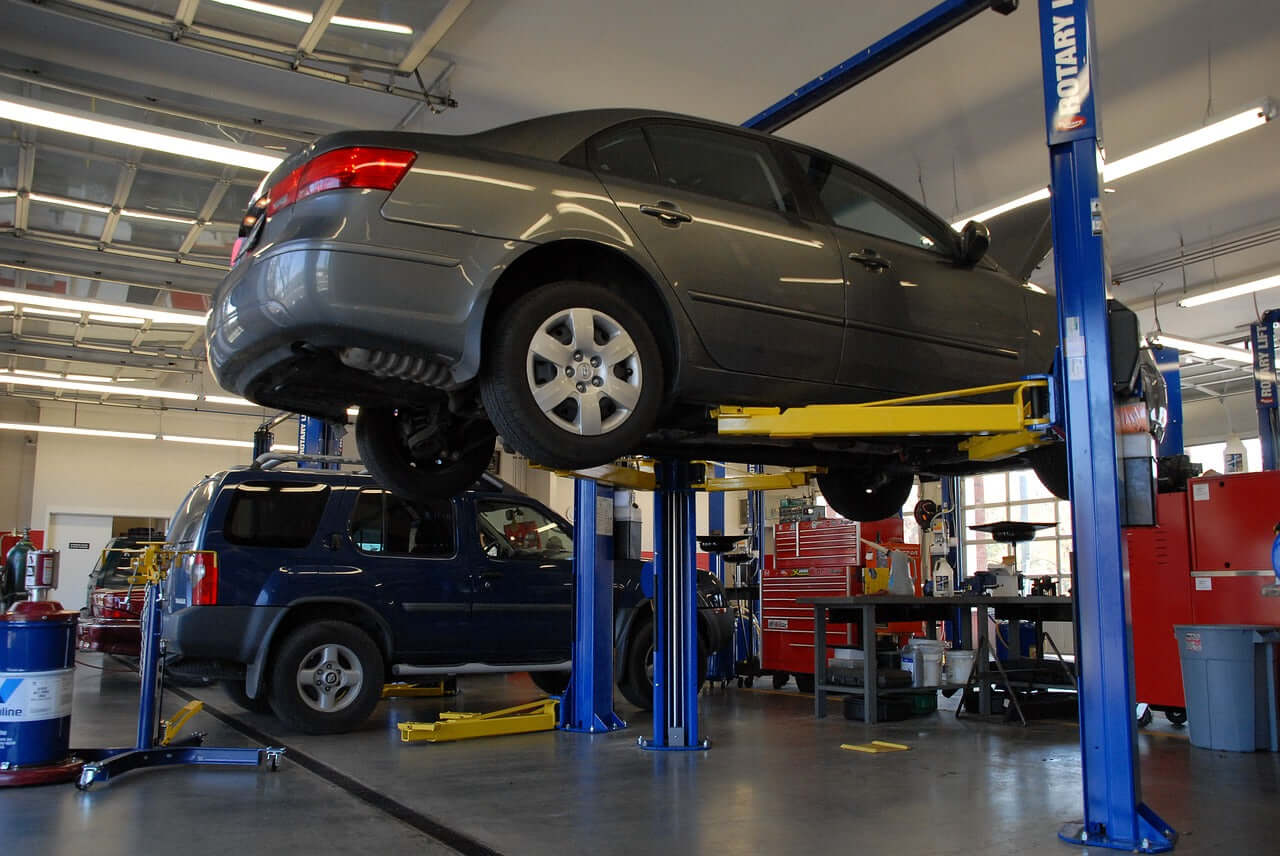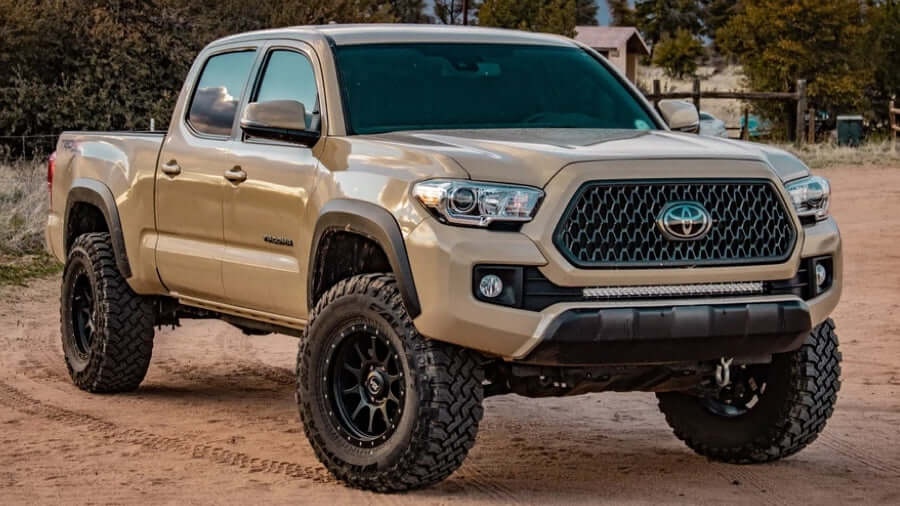The Toyota Sequoia has enjoyed 20 years of success as the Japanese automaker’s entry into the mid-range full-size SUV market. Based on the Toyota Tundra chassis, the Sequoia offers a signature balance of space, amenities, and capability. But over the years, Toyota Sequoia air suspension problems have been a thorn in owners’ sides.
Keep reading to learn more about how to spot suspension issues with your Toyota Sequoia, as well as a few ways to fix them—some better than others.
Toyota Sequoia air suspension problems warning signs
Your Toyota Sequoia comes equipped with a warning light on the dash that alerts you to suspension faults. But the problem with this is, by the time that light comes on, the problem has already gotten very advanced. However, there are some early warning signs of a bad suspension on your Sequoia that you can keep an eye out for.
- Loud compressor. You shouldn’t be able to hear your compressor kicking on and off. If you do hear it, especially if it’s very loud, this indicates that the compressor is malfunctioning or overworking.
- Leaning. When one side of your Toyota Sequoia air suspension is failing, it will have trouble keeping that side at the proper ride height. If you notice your SUV leaning to one side, you likely have a problem.
- Squatting. One common warning sign of a bad suspension is when the rear suspension fails and, as a result, the rear end of the vehicle sags down. This is especially common in big, heavy vehicles like your Sequoia.
- Nose diving. Your suspension is a key component in your car’s braking system, absorbing much of the force that it takes to stop your vehicle. When the front suspension is worn out, the front end of your Sequoia might dip down as it comes to a stop.
- Bounce test. You can proactively check for suspension issues using a simple method called the bounce test. Just walk to each corner of your Toyota and push down hard. It should quickly pop back into place. If instead, it bounces up and down or takes a long time to return to the proper height, you likely have a problem.
How your Toyota Sequoia air suspension works
Air suspensions are complicated systems that use a network of interconnected parts to keep a car at the proper ride height. Let’s take a look at how the process works.
1. Ride height sensors take a mechanical reading of your Toyota Sequoia’s ride height as it travels down the road. It senses dips and bumps in the road and relays this information to a small computer called the suspension control module.
2. The control module interprets these signals and determines how much each corner needs to be raised or lowered. It then sends instructions to the air compressor that tell it how much air to generate and where to send it.
3. Your Sequoia’s air compressor creates pressurized air and pushes this air through the rubber air supply lines and into the air springs.
4. This air inflates the air springs to the proper height needed to keep the chassis level and the ride smooth.
Why the Toyota Sequoia has air suspension problems
Air suspensions, as you can see, are a huge technological innovation and an interesting process. All those high-tech components allow the Sequoia to deliver a truly great ride—for a while.
But you can see where things can get complicated in a hurry. Each of these components relies on the others working properly in order to function as it should. And since the system relies on moving parts like the compressor and the ride height sensors, parts of it are simply going to wear out over time.
Once one component has an issue, the rest will try to pick up the slack. One common example of this is when there is a leaky air bag or a tear in the air supply line. Since not all of the air that is being created reaches the air spring, the compressor has to work overtime to compensate. This can also cause confusion for the suspension control module.
This extra stress can cause a chain reaction where parts start to wear out much faster than they would under normal conditions. And those problems aren’t limited to just your air suspension either. A worn out suspension can put extra stress on your brakes, steering, and other components.
Toyota Sequoia air suspension repair costs
If you’ve spent much time at the mechanic, you know that “complex” and “high-tech” often equal “expensive.” And that’s certainly true when it comes to air suspensions.
Here’s a look at the average cost of a few key air suspension components, according to data from RepairPal:
- Air strut (1): $820.37
- Ride height sensor (1): $538.56
- Air compressor: $1,847
- Suspension control module: $1,531
It’s important to remember that these components tend to wear out at the same rate. So when one air strut or ride height sensor starts to fail, you can be sure that the rest aren’t too far behind. That means that to truly fix your Toyota Sequoia air suspension problems, you’re going to have to replace all four.
Also, these prices do not include labor. And while shop labor already comes at a hefty cost, the complexity of these systems just means more complicated work for the mechanic. That translates directly into a much larger repair bill.
The best way to fix your Toyota Sequoia suspension problems
Fortunately, there is an alternative for your air suspension issues. Instead of continuing on with the endless cycle of repairs, you can get rid of that problematic air suspension and replace it with a much more reliable coilover suspension.
Rather than air and rubber, this Toyota Sequoia air suspension replacement sits your SUV on durable steel struts and coil springs. And it does so at a very affordable price. You can replace all four wheels of your Toyota Sequoia suspension for close to what it would cost to replace just one of your air springs.
This conversion kit uses high-grade steel struts and cold-wound coil springs in each kit for a durable, long-lasting ride you can depend on. And each kit is made right here in the USA, allowing Strutmasters to keep a close eye on manufacturing quality.
The engineers at Strutmasters spent countless hours designing, tuning, and testing these kits so that they could deliver a quality of ride similar to your original air ride. Some Sequoia owners even prefer the slightly sportier, more responsive handling that comes with a coilover suspension.
A Toyota Sequoia suspension you can count on
It’s important for a company to stand behind its products, especially when those products are in charge of you and your family’s safety. That’s why Strutmasters backs each of its suspension conversion kits with a one-year warranty covering manufacturing defects and quality issues. In addition, the coils themselves are covered by a Limited Lifetime Guarantee.
That means you feel confident that you won’t have to keep going back to the repair center for an air suspension fix. Instead, you can have some peace of mind and get back to enjoying your Toyota.
How to convert your Toyota Sequoia air suspension
Our engineers designed each kit to be simple enough to install at home. If you’re a competent DIYer, all you’ll need is a basic set of tools, a sturdy jack, and about an hour per wheel. But even if you don’t feel comfortable doing that, installation is a breeze for any mechanic—saving you loads of money on labor fees.
If you’re ready to go ahead and convert, you can buy your Toyota Sequoia suspension replacement kit and have it within a few days. But if you still have questions, you can always call us at (866) 358-0127. Our Suspension Experts will be happy to answer them or help make sure you get exactly what you need to fix your air suspension issues for good.





